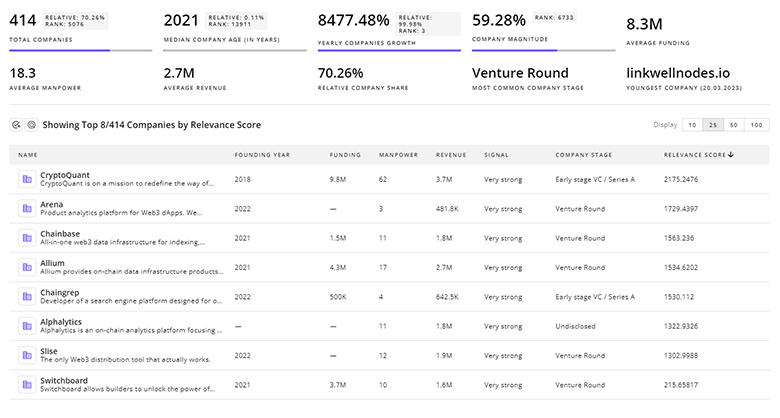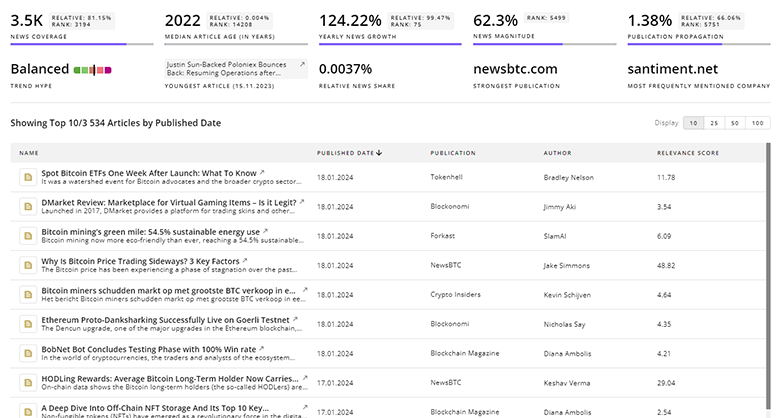
Order Management Report
: Analysis on the Market, Trends, and TechnologiesThe global order management market sits at a clear inflection point: estimated market size is $2.63 billion in 2025 with a projected 9.1% CAGR through the forecast horizon and a baseline projection of about $4.80 billion by 2032, signaling sustained commercial demand for integrated, cloud-first orchestration platforms. These revenue dynamics align with multiple market studies that forecast high single-digit to low double-digit growth for multichannel and inventory/order segments, while buyer priorities concentrate on real-time inventory, AI-based forecasting, distributed order routing, and faster fulfillment visibility—capabilities that determine vendor selection and margin impact for retailers and B2B sellers Multichannel Order Management Market Size, 2033 Forecast Order Management Software Market (2025).
The last time we updated this report was 31 days ago. If there’s something missing or off, your tips are welcome!
Topic Dominance Index of Order Management
The Dominance Index for Order Management merges timelines of published articles, newly founded companies, and global search data to provide a comprehensive perspective into the topic.
Key Activities and Applications
- Unified order capture and lifecycle orchestration across web, mobile, marketplaces, and store POS, turning fragmented orders into a single source of truth for fulfillment and returns Order Management's Essential Role in Creating a Positive Omni-Channel Experience.
- Real-time inventory synchronization (multi-warehouse, store, supplier) to prevent oversells and enable ship-from-store or buy-online-pickup-in-store fulfillment decisions This global Order Management Applications Software market research report.
- Intelligent order routing and distributed order management (DOM) that optimizes cost, carbon, and lead time by selecting fulfillment nodes dynamically.
- AI-driven demand forecasting and exception automation to lift forecast accuracy and reduce manual exception handling burden for operations teams 7 Order Management Trends for 2025.
- Customer-facing status and returns management (post-purchase experience), including predictive ETAs and automated returns routing to reduce support costs and improve loyalty IDC PeerScape: Practices to Optimize Omni-Channel Order Orchestration and Fulfillment.
Emergent Trends and Core Insights
- Voice and hands-free interfaces for order entry and execution are moving from experimental to operational use in mobile workforces, improving speed and reducing training time for field and in-store staff.
- Enterprise buyers set performance bars for fulfillment visibility and responsiveness; vendors that deliver sub-second or near-real-time availability and promise windows gain measurable adoption advantages The Forrester Wave: Order Management Systems, Q1 2025 — Fluent Commerce case summary 2024 Order Management Software Market research summary.
- Platform consolidation pressures favor cloud-native, API-first suites that can integrate broadly; specialists must either embed into platform stacks or offer highly differentiated vertical value to survive Worldwide Order Management and Orchestration Applications Forecast, 2024–2028.
- AI and automation produce measurable operational gains (improved forecast accuracy, fewer manual exceptions), but integration complexity and legacy ERP coupling remain the primary adoption inhibitors for mid-market customers.
- Sustainability and carbon-aware routing appear as pragmatic procurement levers in order orchestration, with carriers and routing logic starting to include emissions metrics as optimization criteria.
Technologies and Methodologies
- Machine learning and probabilistic forecasting engines for demand planning and safety stock optimization; these systems anchor inventory decisions that feed order routing logic Multichannel Order Management Market Research (MRFR).
- API-first, microservices, and MACH-style architectures that enable composable OMS components and faster vendor integration cycles.
- Event-driven orchestration and rule engines for intelligent order splitting, prioritization, and routing across nodes (warehouse, store, 3PL) to optimize cost and SLA.
- Mobile, OCR, and RPA-assisted order entry for field sales and B2B scenarios to lower manual error rates and accelerate order-to-cash cycles.
- Immersive training (AR/VR) combined with voice interfaces for warehouse and fulfilment staff to reduce onboarding time and improve retention where high throughput and seasonal peaks stress labor.
Order Management Funding
A total of 646 Order Management companies have received funding.
Overall, Order Management companies have raised $10.4B.
Companies within the Order Management domain have secured capital from 2.3K funding rounds.
The chart shows the funding trendline of Order Management companies over the last 5 years
Order Management Companies
- Hyperfox — Hyperfox focuses on AI-enabled order automation and recently expanded into European markets, positioning its platform for mid-market retailers that need richer analytics and automated exception handling without replacing core ERPs; the company has public activity around expansion and grant funding that signals product-market fit in regional fulfillment operations.
- Eighty6 — Ninety6 builds supplier- and F&B-focused order inbox automation and launched an AI Inbox product aimed at wholesalers and restaurant suppliers; this addresses a frequent pain point where suppliers receive orders across fragmented channels and need a single automated intake and routing layer to reduce processing time and errors.
- OneStock — OneStock provides distributed order management and intelligent fulfillment orchestration and secured a sizable investment to scale its DOM capabilities, making it an attractive choice for retailers seeking store-as-fulfillment-node strategies and unified inventory promise logic.
- LOGILESS — LOGILESS pairs WMS improvements with API integrations into OMS workflows; its recent product push on WMS APIs and integrations positions it to win customers seeking tighter warehouse-to-order orchestration and faster time-to-value for fulfillment automation.
- Doosty — Doosty focuses on AI-assisted order processing (OCR, smart parsing, automation of exceptions) for document-heavy B2B channels; that capability maps directly to higher-margin verticals such as manufacturing and distributors that need to retire manual PO handling and speed order-to-fulfillment throughput.
(Each company above ties directly to the key activities and technology themes described earlier and appears in the internal data as active players or event participants in the order management ecosystem.)
Delve into the corporate landscape of Order Management with TrendFeedr’s Companies tool

4.2K Order Management Companies
Discover Order Management Companies, their Funding, Manpower, Revenues, Stages, and much more
Order Management Investors
TrendFeedr’s Investors tool provides insights into 2.5K Order Management investors for you to keep ahead of the curve. This resource is critical for analyzing investment activities, funding trends, and market potential within the Order Management industry.

2.5K Order Management Investors
Discover Order Management Investors, Funding Rounds, Invested Amounts, and Funding Growth
Order Management News
TrendFeedr’s News feature offers you access to 4.5K articles on Order Management. Stay informed about the latest trends, technologies, and market shifts to enhance your strategic planning and decision-making.

4.5K Order Management News Articles
Discover Latest Order Management Articles, News Magnitude, Publication Propagation, Yearly Growth, and Strongest Publications
Executive Summary
Order management now functions as a strategic fulcrum for commerce operators: it directly controls how inventory turns, how fulfillment cost converts to margin, and how post-purchase experiences affect retention. The market evidence shows consistent, high-single-digit growth and a clear buyer preference for cloud-native, API-first platforms that combine distributed order management, AI forecasting, and rapid fulfillment visibility. Vendors that deliver modular, integrable orchestration engines and measurable improvements in forecast accuracy and fulfillment SLA will capture the largest commercial opportunities. For adopters, the practical priorities are the same: migrate to a single order-of-record, reduce manual order exceptions with automation, and deploy intelligent routing that balances cost, speed, and sustainability metrics. Those moves convert OMS investments into predictable operational savings and stronger customer propositions.
Are you an insider in the trends or tech industry? We’d love for you to contribute to our content.











